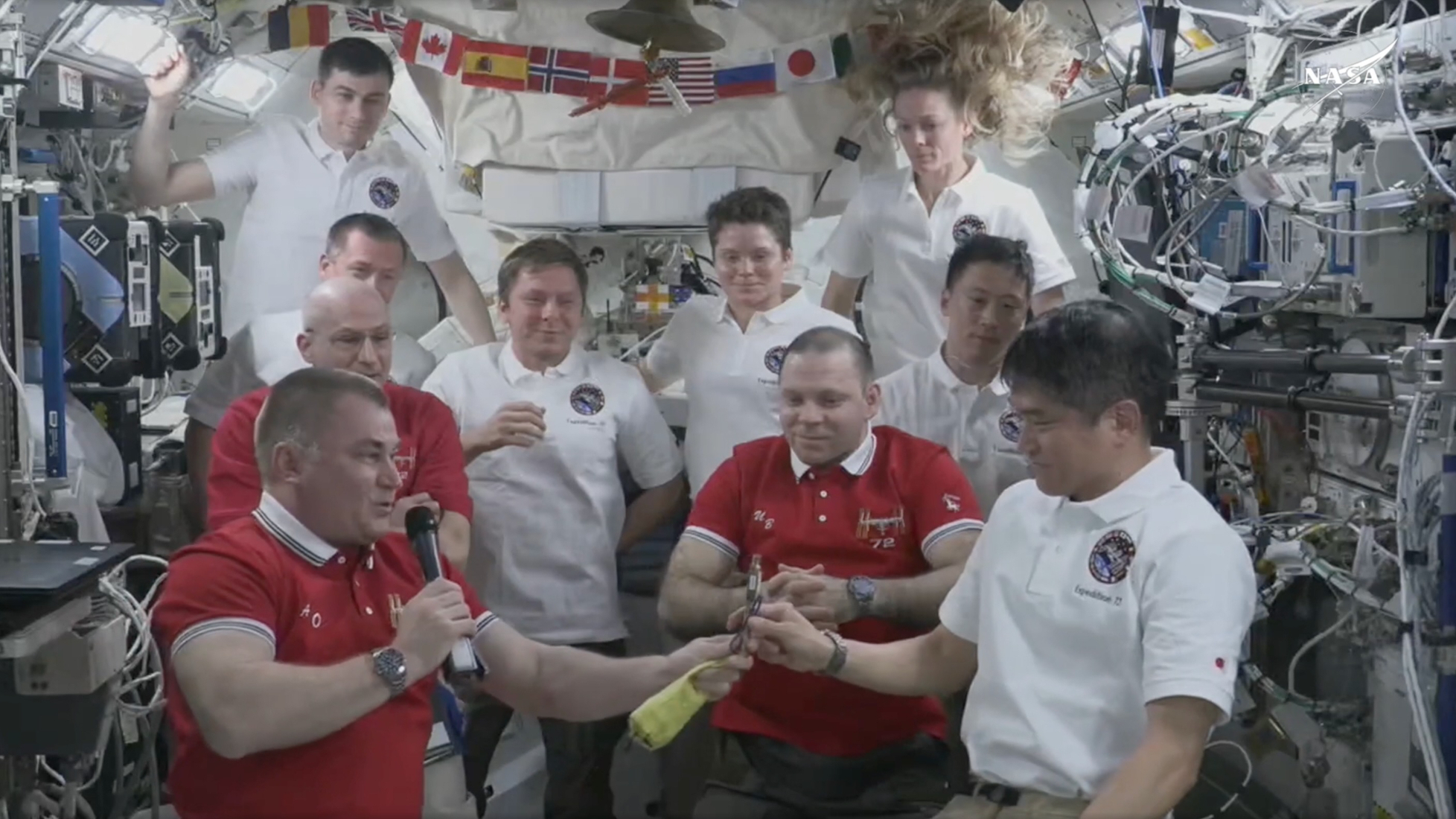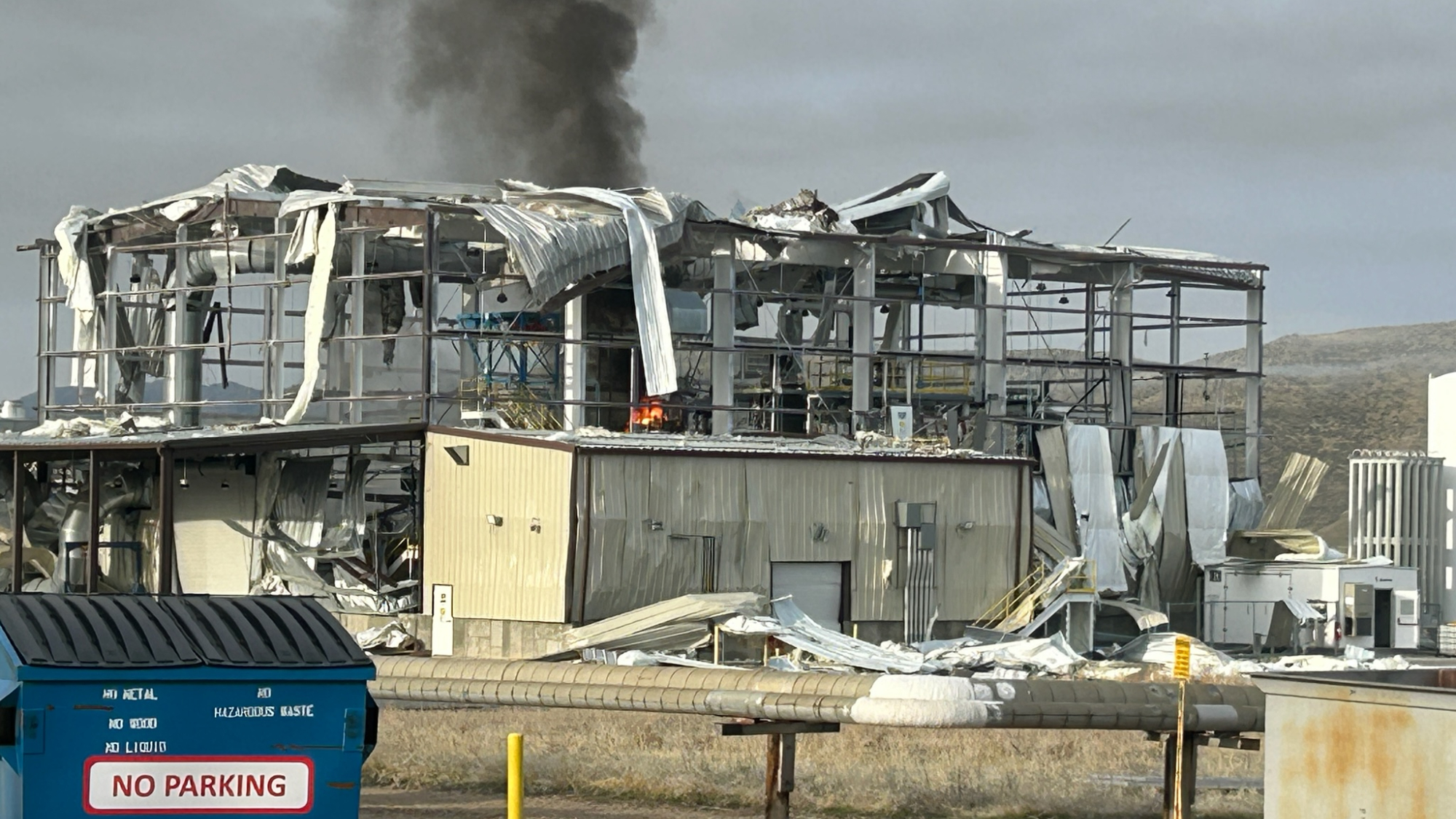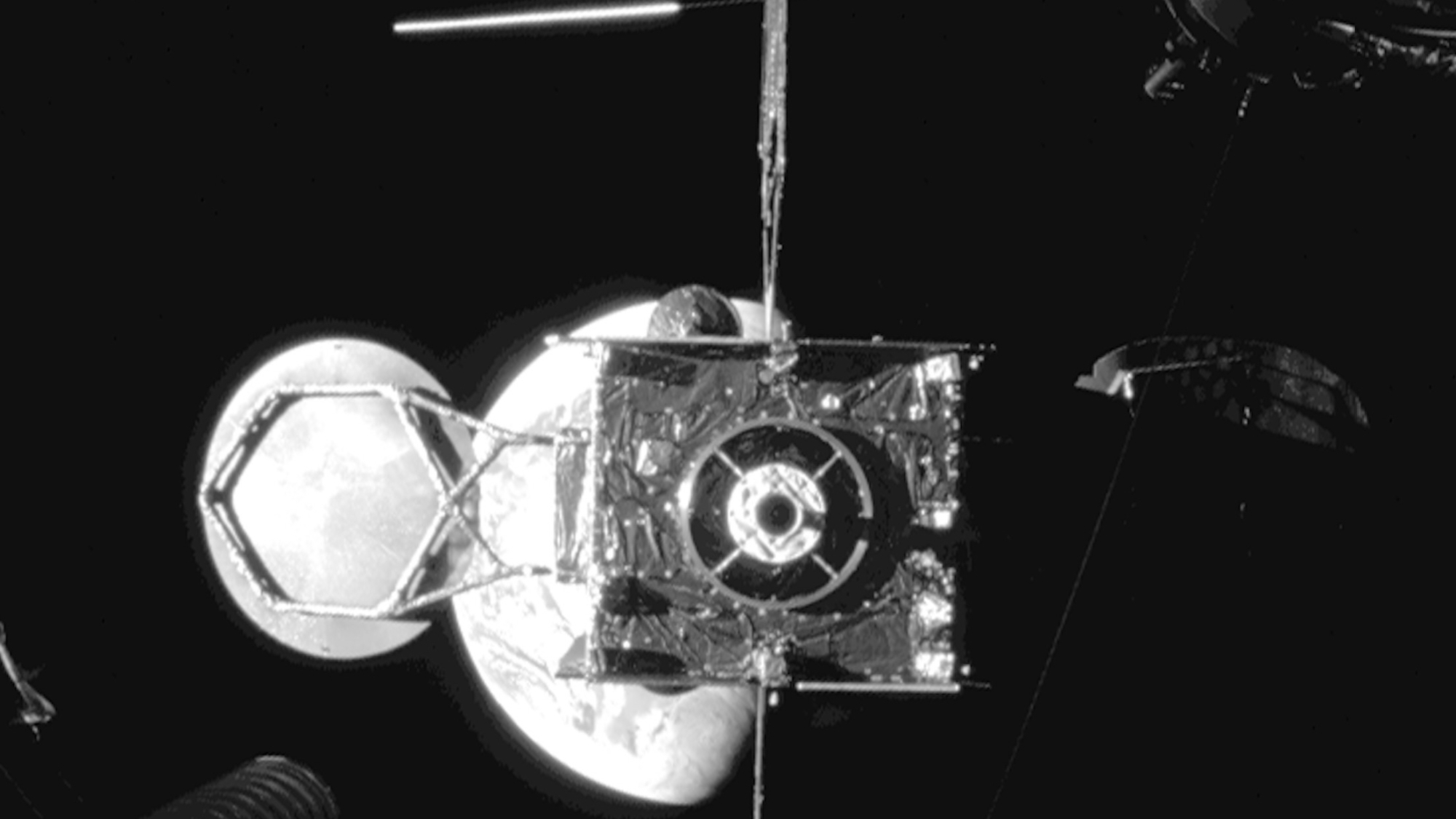Apollo-Era Mission Control Room Revived For Space Station

HOUSTON -- Thirty-eight years ago Wednesday, NASA launched its firstmanned Apollo mission.
As soon as the Saturn IB rocket cleared the tower inFlorida, the Apollo7 crew and vehicle became the responsibility of the men in Flight ControlRoom 1 (FCR-1, pronounced 'ficker-one') in Houston, Texas.
One of two similarly-configured mission control rooms at theManned Spacecraft Center -- later renamed Johnson Space Center -- FCR-1 was usedto monitor Skylab,the United States' first space station, and later the first flightof the space shuttle Columbia. In total, the room oversaw 61 missions.
Its last full mission was STS-71 in 1995,which marked the first docking between an orbiter and a space station, theRussian Mir.
Last that is, until Oct. 6, when the room, now revived andupgraded, became active again as NASA's mission control for the InternationalSpace Station. Yesterday, flight directors from past and present gathered inFCR-1 for a ribbon cutting ceremony honoring the room's reactivation.
More space, more power
The previous space station control room, dubbed Blue FCR,was put into service in 1998 with the first station assembly missions. Thoughmodern for its time, space -- no pun intended -- became an issue quickly.
Get the Space.com Newsletter
Breaking space news, the latest updates on rocket launches, skywatching events and more!
"The consoles [were] designed for three displays, twosets of voice configuration loops that you [could] dial in digital voice andthat's pretty much it. Anything else you want, we had to pretty much addin," said flight director John McCullough, who led the relocation effort."Before we left this room, we ended up adding monitors on the side, TVs onthe side, and you can see just a bunch of 'band-aids' going into theroom."
"When we were doing complex operations, such asspacewalks, launches or rendezvous and dockings, we had to relocate to thelarger shuttle flight control room or use back rooms. In that configuration theteam didn't have the best possible situational awareness of what was going on,"said McCullough.
Having outgrown the 16 large consoles that Blue FCR couldoffer, McCullough and his team began seeking a new, larger but low-costsolution.
"There are a lot of advantages to having [a] cleanslate, except for cost. When we moved into the new room, we had a really tightbudget," explained McCullough. "So we had to get real innovative on thedesign, how we did it."
McCullough's budget was $1.6 million. By upgrading andreusing computer equipment, most of the funds went to retrofitting the oldApollo-era systems.
"Most of [the budget] was labor, running the redundantpower to the room and making it a flight control room, which has a lot offacility requirements to it versus any other room in the building," saidMcCullough.
An important requirement was enough power to run the entirespace station from just two consoles.
"The lowest staffing [is] during Orbit 1, which ismidnight to 8:00 a.m. CDT and the least desirable of any shift anybody works.There is a flight director, a Capcom, the planner and two system operators thatrun the entire [ISS] from their two consoles."
These two controllers -- "super-operators" asdescribed by McCullough -- are each tasked with monitoring half of the station'ssystems. They go by call signs of Titan and Atlas and serve in those roles fortwo year stints.
In the old Blue FCR, Titan and Atlas would each sit at aconsole, but would be responsible for two more. While a few summary screenswere available, if they needed any details about a system not represented bytheir console, they would need to physically move to the others.
"There was not enough horsepower [from one console] torun half a space station," said McCullough.
"So we needed two super consoles added into this roomfor the quality of life for these folks that were giving up two years of theirlives working in the middle of the night. They didn't also need to be runningall over, potentially [missing] data. It's a very challenging job because ifthere's a problem, they've got to do three times the job."
To move two more consoles into the Blue FCR, which assumesyou could find the room for two, would cost 1/3 the budget McCullough was givento spend on FCR-1.
However, while the relocation made sense, it wasn't assimple as deciding to go.
It wasn't just 'Let's go set-up that room,' [as] that roomwas used by somebody," explained McCullough. "That room was used bythe science centers, so it became a juggling act. 'If we're going to go inthere, where are they going to go? And if they are going in here, where arethose people going to go, because every room is in use?'
"We had to do a house of cards where we'd move instages -- three different phases -- and re-position [the] equipment around,"said McCullough.
Moving day
While they had nine months to remodel, McCullough and histeam had a much shorter window to move.
"We basically had to move in a span of two weeks," saidMcCullough.
The window to move opened just after NASA's STS-115shuttle mission landed on Sept.21 and the shuttle flight controllers left, he added. A team of ISScontrollers from the old station FCR moved into NASA's shuttle operationscontrol room, and within 14 days all necessary hardware was hauled from theBlue FCR and reinstalled in FCR-1.
"[We then had to] do our systems testing and three sims[simulations], in order to [certify] the room to be ready to support ops,"McCullough said.
Before leaving the original station control room, the teamassembled for a portrait wherein the crew in space could see the controllerswhile at the same time the astronauts were projected on the large screen at theroom's front.
Originally, the move had been scheduled for Sept. 28, butthe delayslaunching and returningAtlantis kept the shuttle room occupied. Moving day into FCR-1 finally arrivedon Oct. 6.
"On the last day, on the 6th... we came in and set upeverything [in FCR-1], fired up all the machines, got everything going... andthen we went over to [the shuttle FCR]. We took hand over from the other flightcontrollers on what's going on with the systems, and then we got up andunplugged and went into [FCR-1] and did a formal changing of the guardceremony," recalled McCullough.
"It was a big deal."
Ghosts and spirits
"The history of that room is so immense that you feelit when you walk in the room," reflected McCullough.
As a sign in the front of the room confirms, FCR-1 wasestablished in
1965 as the first control room in Houston for mannedspaceflight operations. That sign, along with other details and touches to theroom were important to McCullough to preserve FCR-1's history.
"I worked very strongly to capture the history of thatroom. You'll see it in the historic plaques that are there. All the originalplaques are in that room that weren't there when it was a science center. TheApollo 7 plaque is the original plaque that was hung by flightcontrollers."
A few of those flight controllers were in FCR-1 today forthe ceremony; among them was flight director EugeneKranz.
"You walk into the room and it's changed, technologyhas been upgraded but the beauty of the thing is, is that the culture, thelegacy of the early people continues in this room," Kranz told collectSPACE while standing nearthe flight director console in FCR-1. "You know I think about thecontrollers who are no longer with us -- you've got Cliff Charlesworth, DonPuddy and Pete Frank, several of the guys in the systems area -- you walk intothis room and you're in touch with them again."
"It's really spectacular to see today's generation aspassionate about the business as we were. I think our nation may find thecourage to go back in and finish what we started and they've got the rightpeople to do it.
"I just wish that I were young again and give itanother shot," said Kranz.
Mission Operations Deputy Director Milt Heflin echoed someof Kranz's comments during a speech to the room.
"'Don't let the ghosts in the room bother you,'"he read from a letter written by former flight director Gerry Griffin,"'They're harmless.' Well, I don't know about that," Heflin continuedin his own words, "but I do expect the spirits in this room to inspire usto greater achievements as we journey through the most exciting and challengingtime in space station assembly."
NASA's first flight director, Chris Kraft also spoke to theassembled controllers.
"You can't say any words in here that don't make methink of some incident that took place here," said Kraft. "There hasbeen a lot of joy here, there's been a lot of tragedy here, and they all gotogether as part of space exploration. I've been frightened to death in here, Ihave seen people wave flags in here, and I have seen every kind of emotionthere is."
"I hope someday, and I hope I'm still living, that I willsee people land on the Moon as you command it from here," concluded Kraftto applause.
Before cutting the ribbon, JSC Center Director Michael Coatsaccepted a plaque commemorating the event from Mission Support OperationsContract program manager Dan Brandenstein. Framed together were a piece of therail from the original room that was present when Apollo 7 launched and a phototaken last Friday when station ops began in FCR-1.
- Spacehab's Mock Module Sold to Museum
- Complete Coverage: ISS Expedition 14
- Complete Space Shuttle Mission Coverage
- NASA's STS-115: Shuttle Atlantis to Jump Start ISS Construction
Copyright 2006 collectSPACE.com. All rights reserved.

Join our Space Forums to keep talking space on the latest missions, night sky and more! And if you have a news tip, correction or comment, let us know at: community@space.com.

Robert Pearlman is a space historian, journalist and the founder and editor of collectSPACE.com, a daily news publication and community devoted to space history with a particular focus on how and where space exploration intersects with pop culture. Pearlman is also a contributing writer for Space.com and co-author of "Space Stations: The Art, Science, and Reality of Working in Space” published by Smithsonian Books in 2018.In 2009, he was inducted into the U.S. Space Camp Hall of Fame in Huntsville, Alabama. In 2021, he was honored by the American Astronautical Society with the Ordway Award for Sustained Excellence in Spaceflight History. In 2023, the National Space Club Florida Committee recognized Pearlman with the Kolcum News and Communications Award for excellence in telling the space story along the Space Coast and throughout the world.









